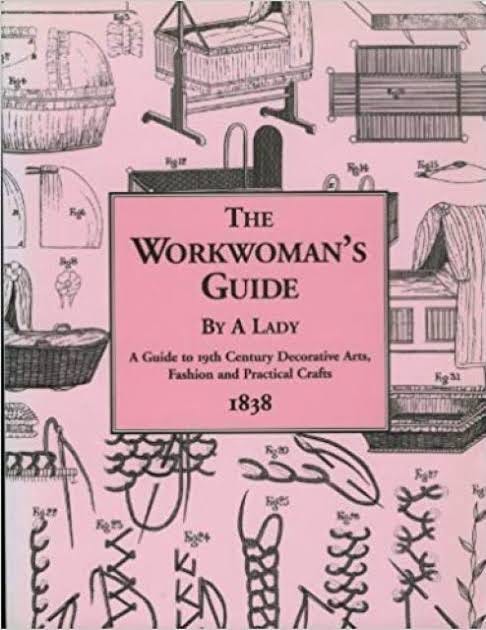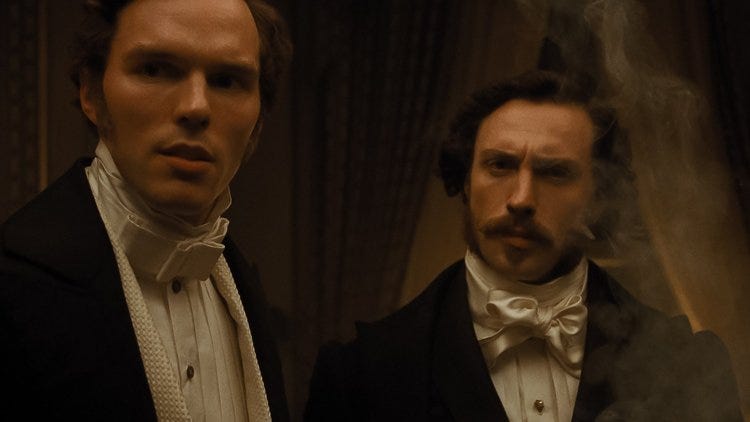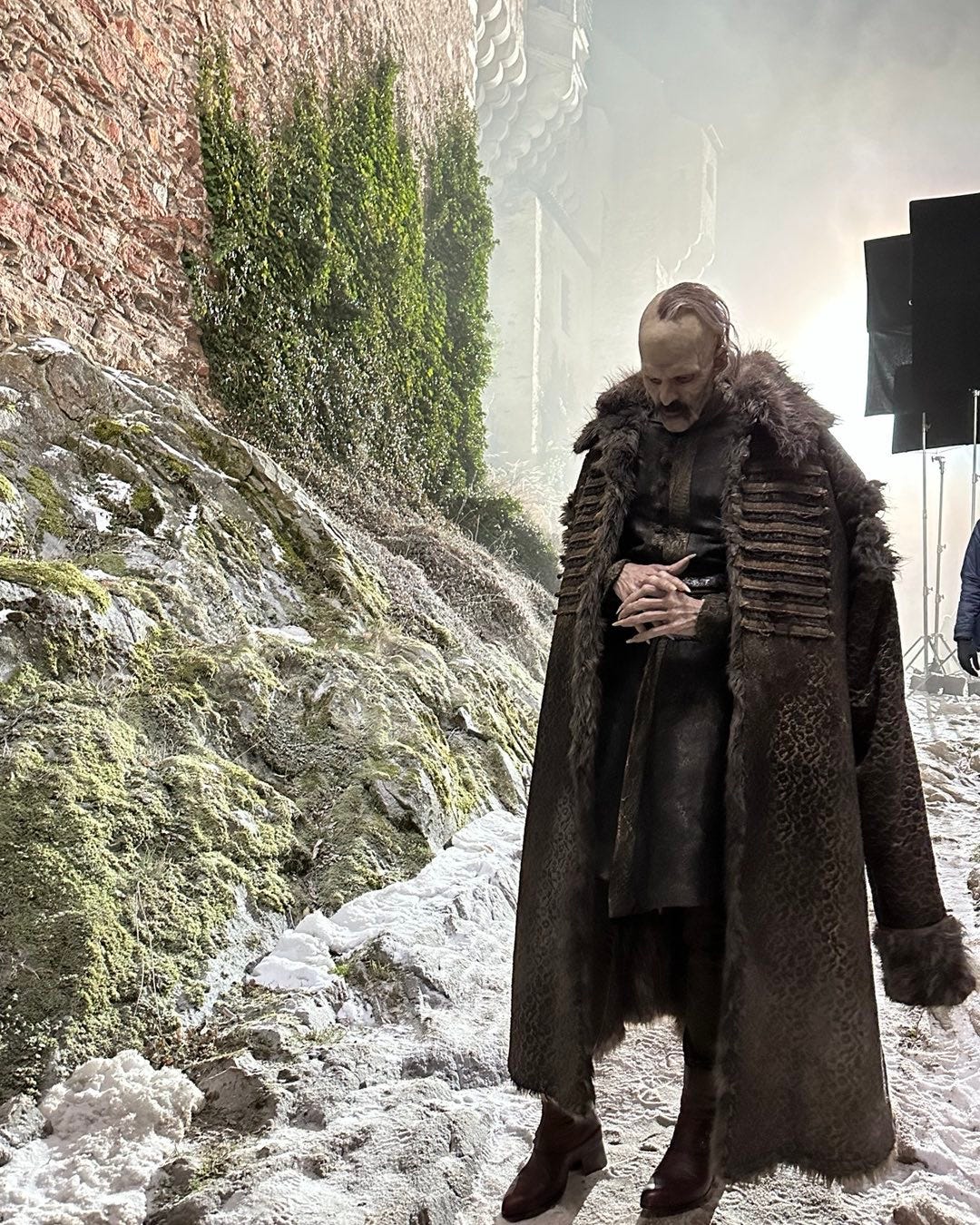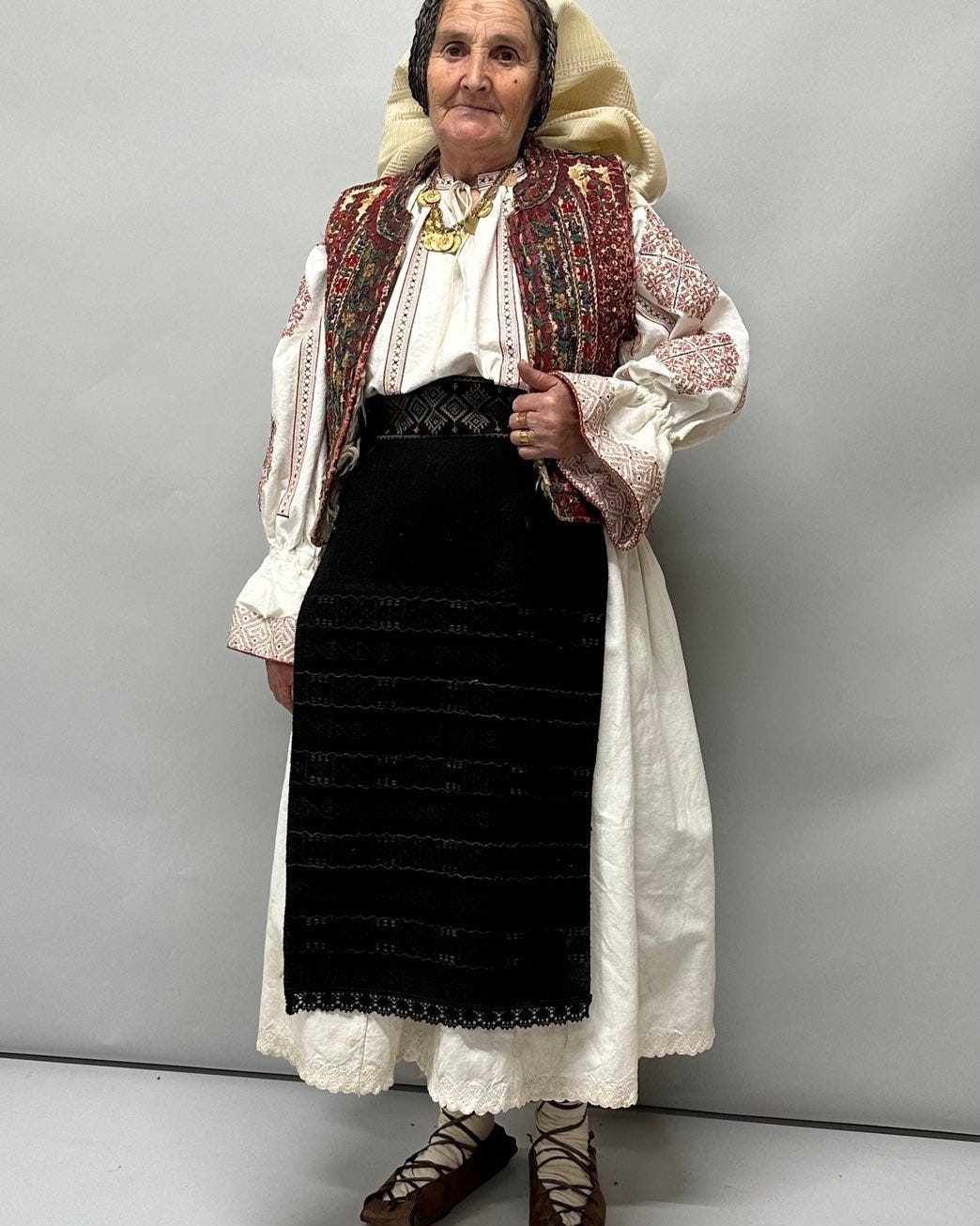Historical Accuracy In Nosferatu's Costumes : Interview With Costume Designer Linda Muir
Nosferatu is a remake of the Friedrich Wilhelm Murnau's 1922 version, a gothic tale of obsession between a haunted young woman and the terrifying vampire infatuated with her, causing untold horror in its wake, written and directed by Robert Eggers (The Northman, The Lighthouse). We asked the film's costume designer, Linda Muir, questions about the making of the costumes, the research process, bibliographical sources she referred to and the color palette used for the costumes.
This is not the first time you’ve worked with director Robert Eggers – you’ve previously done the costumes for The Northman and The Lighthouse. What notes did Mr. Eggers share with you for the creative direction regarding the costumes for this version of Nosferatu?
I have worked with Robert Eggers as costume designer on all of his feature films: The Witch; The Lighthouse; The Northman; and Nosferatu, and we have started the creative process for the direction he sees for each film in the same way each time. Robert puts together Look Books of images that speak to him which are divided into topics such as settings, characters, atmosphere, props, types of vistas, etc. and he uses this information in his scripts, since it reflects the society about which he is writing.
So his initial research is forwarded to his collaborators and these images provide the baseline for the research. I add more information by finding multiple images of all garments worn by all characters and written material that defines the garments needed and the construction techniques used to make all the necessary pieces at the period. Orlok was always described to me as having once been a Hungarian Count living somewhere around 1580 to 1620 AD. His clothing should look “black” though in reality when Robert and I spoke further about the meaning of black” it was clear to me that I’d be interpreting “black”, he did not actually mean the colour black, since we needed the appropriate clothing details to still read to help the audience date Orlok’s backstory, if not precisely then at least to know he had lived quite a while before the principle characters set at 1838. There was also cultural difference that also needed to read: “contemporary” Germanic 1838, and more ancient Transylvanian circa 16th Century.
Though we didn’t actually talk about this specifically, I could tell that Robert and Jarin were playing with the concepts of black vs. white; dark vs. light; obscured vs. revealed because these contrasts cropped up in my discussions with Robert about each character.
For example, if Orlok had to look “black” then Ellen’s wedding dress had to be “white”, even if at the period women wore many other pale colours, often simply their best dress, to be wed, as Queen Victoria was the one who introduced the white wedding dress convention in 1840.
I was to avoid the use of red, other than in the clothing of the Hunedoarian and Romani folk costuming.
On the historical accuracy of the costumes: The film is set across Germany (Wisborg) and East Bohemia in 1838. Not only did you need to create wardrobes for the main characters and background in Germany, but also for Gypsies in East Bohemia. Can you describe the research process for both sides? What bibliographical sources did you refer to?
I researched 1838 Germany by looking specifically at fashion plates from journals such as Weiner Moden, for each month between 1836 and 1840, to gain knowledge of what would be up-to-the-minute Germanic styles for Freidrich and Anna Harding (1840 to know what to avoid, if anything, so as to not be anachronistic), and Parisienne and Italian fashion plates generally from the period. I found paintings, illustrations from the period, and written pamplets that described such things as cravats (their cut and tying techniques); frock coats; waistcoats; etc.. There was a gold mine of fact called The Workwoman’s Guide from 1838, which I found invaluable for authentic patterns for everything from nightgowns and men’s shirts to the oiled-silk hood that Ellen wears in the carriage.
The secondary locales were:
The villagers at the inn in Hunedoara, the wandering Romania which showed men and women of that specific region. This research was the most difficult because it was written in Romanian. I found illustrations drawn by a Romanian woman who travelled the country recording folk costuming, and photographs that depicted some of the garments that remain unchanged.
Outside that inn, the Romani men and women were costumed with the knowledge that they were nomadic and would likely have drawn from used clothing picked up in their travels. We consciously did not create the more modern “gypsy” look often used.
Additionally, there was the monastery in Bukovina where Hutter “borrows” a horse and the stableman’s clothing to return to Wisborg. This clothing was researched separately as the garments and embroidery motifs were different yet again.
© American Duchess Blog
Describing the fashion style of men and women in 1838 in Germany: We've seen top hats, bonnets, puffed sleeves in the costumes of Nosferatu. How would you describe the clothing items characteristic of womenswear and menswear in that era using Ellen and Thomas' wardrobes respectively?
The question would serve to discuss the period fashion styles better if it contrasted the clothing of Ellen and Anna, and Hutter and Harding because the Hutter’s clothing shows a middle class lifestyle (with Thomas aspiring to more) in its modest cuts, simpler cloth choices and controlled embellishment, whereas the Hardings show wealth in its excess — of fabric amounts, cost of the cloth, complicated embellishments, ornate jewellery, many different coloured top hats rather than one black top hat, or two complicated bonnets rather than one daytime bonnet. Ellen has a few nightgowns that are all the same style and fabric and is a simple construction, whereas Anna has two different styles and both use a lot of fabric in a much more elaborate construction. And so on.
Hutter and Harding ©Focus Features
How would you describe the overall color palette of the costumes in Nosferatu?
The colour palette for the costuming in Nosferatu is emblematic of the period, and individual to each character, moving from light, youthful optimism through to dark
thoughts, death and loss. Textiles that reflected the light, either through use of metallic threads in their manufacturing or hard lustrous finishes, were selected where possible in order to reflect light and show silhouette in extremely low light filming conditions.
Concerning Count Orlok, there are certain scenes where we see Orlok naked when biting, highlighting his animalistic side, creating a sense of fear that was also highlighted by hiding his face and accentuated through his costume. Can you speak more on costuming Orlok and ultimately the how you decided to dress him?
Orlok was always described to me as having once been a Hungarian Count living
somewhere around 1580 to 1620 AD. His clothing should look “black” though in reality when Robert and I spoke further about the meaning of black” it was clear to me that we needed the appropriate clothing details to read to help the audience date Orlok’s backstory, if not precisely then at least to know he had lived quite a while before the principle characters set at 1838. There was a cultural difference that also needed to read: “contemporary” Germanic 1838, and more ancient Transylvanian circa 16th Century. Though we didn’t actually talk about this specifically, I could tell that Robert and Jarin were playing with the concepts of black and white; dark and light; obscured and revealed because these contrasts cropped up in my discussions with Robert about each character.
For example, if Orlok had to look “black” then Ellen’s wedding dress had to be “white”, even if at the period women wore many other pale colours, often simply their best dress, to be wed, as Queen Victoria was the one who introduced the white wedding dress convention in 1840.
I was to avoid the use of red, other than in the clothing of the Hunedoarian and Romani folk costuming.
Ofuscating Orlok’s face, neck and hands was intended as a practical consideration that the Count himself would have made as he would not want Hutter to see his decrepitude and therefore run away before the contract was signed.
Orlok’s clothing was intended to convey great wealth, position, entitlement, sensuality, virility, and masculinity. His overcoat or mente is of a heavy, luxurious, floral patterned silk/cotton chenille that has a flocked appearance with gold threads in the base fabric.
The entire coat, which is always worn as a cloak, is fur-lined, as are the overly long sleeves and the high raised collar. The fur indicates wealth yet again : warmth in a vast, stone castle. The sleeves are an evolution of shepherds that originally wore sheepskin cloaks that later became sheepskin sleeved coats and the nobility could wear the coats which eventually had extremely long sleeves (Orlok’s are slightly more exaggerated for effect) only ever as a cloak, as there were slits at armpit height through which arms could extend to keep the coat in place (ours has a harness worn under the tunic that comes through slits in the shoulders and attaches to the cloak on the underside at the shoulders). Gold galoons and gold buttons decorate the cloak front. The buttons (twelve on each of the three mente multiples, totalling thirty-six) are hand crocheted in gossamer gold thread in a closed bell shape and weighted with fishing line weights for heft.
Orlok’s dolman, or tunic, is of a mauve/lilac silk with a gold jagged floral all-over pattern. It’s centre front placket, collar and shaped cuffs are embellished with stone coloured velvet with gold lace overlay. Silver buttons embellish both the centre front closing and also the centre back opening, a feature of dolman’s at this period.
The trousers are a mustard gold silk, putrid coloured and tight fitting.
The footwear are historically a red leather mule with a high leather sock that slips into the mule (I combined the two items for safety and ease) with a 4” steel horseshoe shaped heel.
Orlok’s fur kolpak hat is decorated centre front with hawk feathers and a purple jewel surrounded by pearls.
Each of the three identical Orlok costumes (actor, stunt, photo dbl) were distressed and aged to evoke 300 years of decay from both the inside where the body was corpsifying and the exterior which was affected by elements in the environment. Orlok has one costume throughout so it had to be absolutely evocative of the character — and appear black.
Comte Orlok played by Bill Skarsgård © Focus Features
Albin Grau created the costumes for F.W. Murnau's 1922 Nosferatu. Is there any piece that you created to parallel/pay homage to his work?
No, not really. Had we seen Orlok without his cloak/coat there would have been a closer resemblance to Max Shrek’s silhouette in the earlier film as the Shrek Orlok is dressed in a black, ambiguous tight-fitting coat/frock coat with centre front buttons, but our Orlok is either naked or fully dressed and when dressed his silhouette is huge and a version of “caped”.
What type of fabrics did you and your team work with on Nosferatu?
The costuming is made of linen, cotton, wool, silk, fur, leather, or sheepskin, often with metallic thread.
Is there any particular costume or piece that you're most proud of?
I am very happy with Orlok’s costuming because the character is iconic and I believe we created a new, relevant iteration for that icon.
And which costume was the most difficult to create?
All of the folk costuming for the Hunedoara Inn, the Romani travellers outside the inn, and the Bukovina clothing for both the Great Schema Abbess nun’s analav and for Hutter’s borrowed clothing was exceptionally difficult to research and create so as not to appropriate the folk look and butcher it, but since we tried to be respectful and accurate, and are receiving amazingly positive feedback comments from the Transylvanian community, I am thankful — we got it right.
Nosferatu, fitting photo of the Innkeeper’s Mother-in-law, portrayed by Georgina Bereghiann © Linda Muir Instagram
Cover and interview by Yamina.H editor in Chief.








